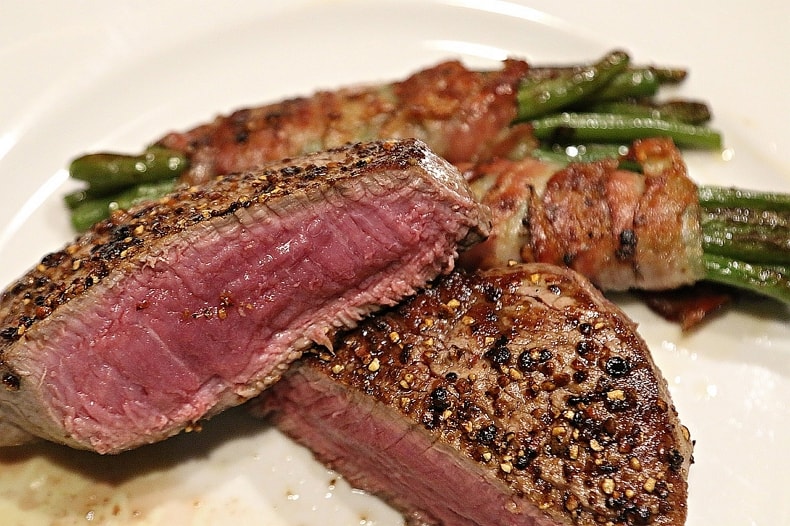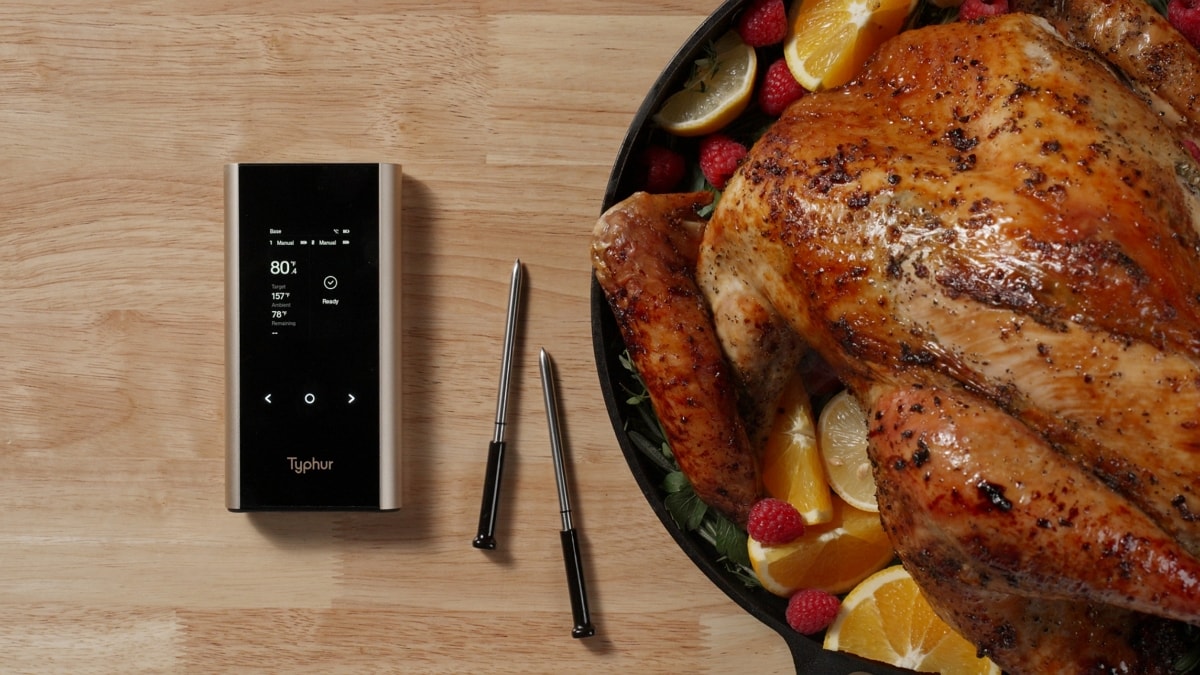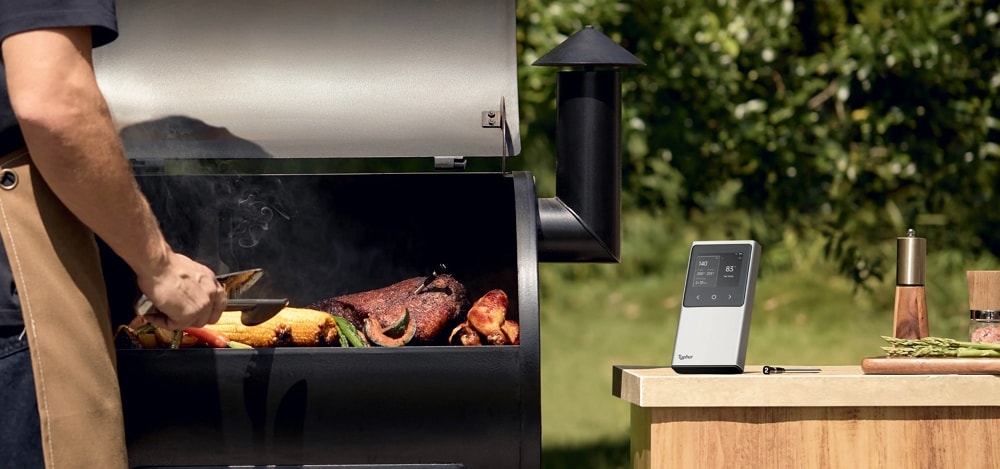
If you’re new to cooking or you want to improve your skills in the kitchen, the first step to getting your meal perfect is cooking it to the right temperature.
Not only will the right temperature make your food safe to eat, but it will also make your food taste better. You can wing it, but using a meat thermometer will take any guessing out of the process.
Meat thermometers are easy to use, but if you’re not sure how to handle them, we put together this guide on how to use a meat thermometer to help beginners do it right.
What is a meat thermometer?
First things first: Before learning how to use a meat thermometer, let’s go over what a meat thermometer is.
A meat thermometer is a temperature-measuring tool used in the kitchen to check the doneness of what you are cooking. It consists of a metal probe that is inserted into food, which is attached to a small screen or dial that displays the temperature. It’s used for any kind of food, but it’s widely used for meat.
Meat thermometers come in different types and styles. Below, you’ll find a basic list of the different types and styles of meat thermometers.
Digital meat thermometer
A digital meat thermometer uses a wired probe attached to a hand-held digital display to show the temperature reading. It’s easy to read and typically comes with many features such as auto shut-off and temperature memory.
Pros: Digital meat thermometers are easy to read and come with many features.
Cons: They require batteries and can be more expensive than analog thermometers.
Instant-read meat thermometer
An instant-read thermometer provides quick temperature readings in just a few seconds. It’s good for checking the doneness of any kind of food, but the major benefit is that you can take the temperature of both thick and thin cuts of meat.
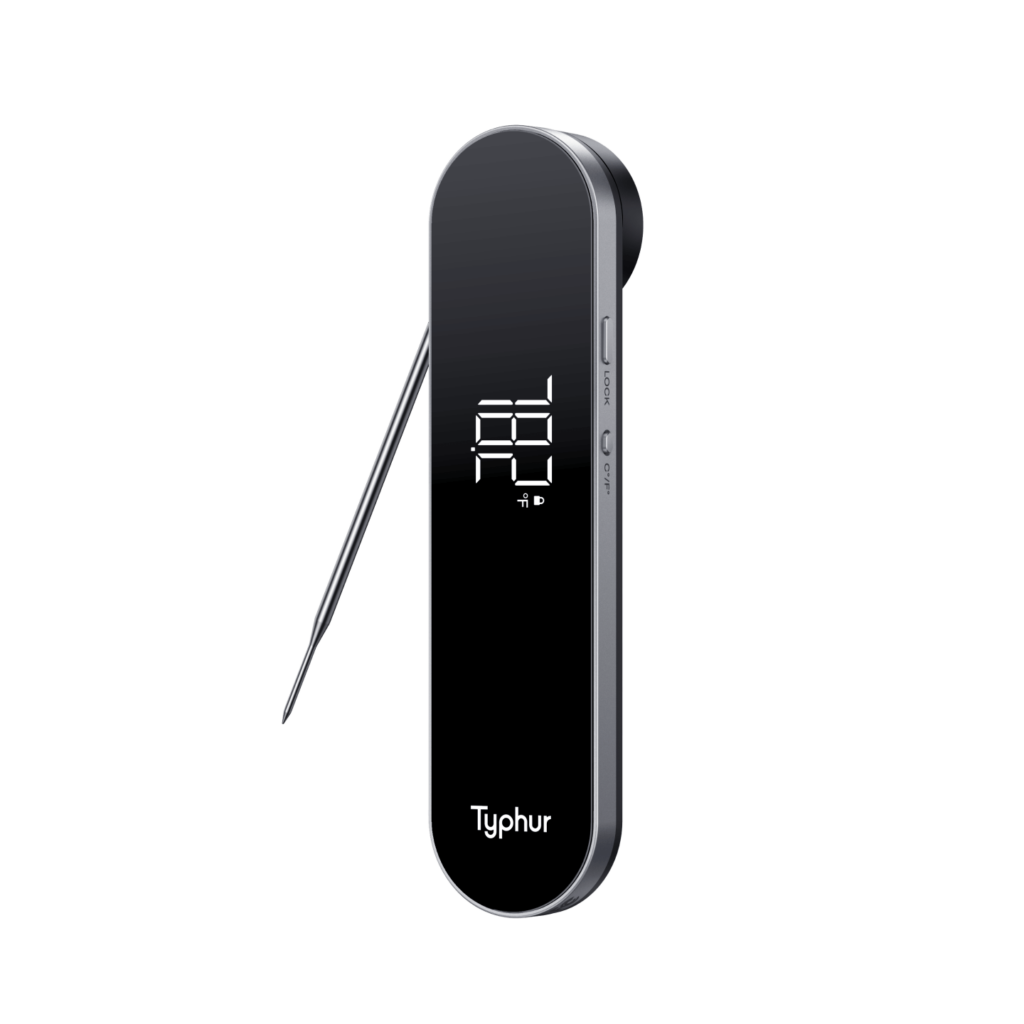
Instant Read Meat Thermometer
Pros: Instant-read meat thermometers provide quick temperature readings.
Cons: They can be more expensive than traditional meat thermometers.
The fastest and most accurate meat thermometer that’s trending right now – is Typhur InstaProbe.
Oven-safe meat thermometer
An oven-safe thermometer is designed to be left in the meat while it cooks in the oven. It typically comes with a metal probe that can withstand high temperatures so that it can be left in the meat without being damaged.
Pros: Oven-safe meat thermometers can be left in the meat while it cooks.
Cons: Some oven-safe meat thermometers have a limited temperature range and you may not be able to use them for extreme temperatures.
Wireless meat thermometer
A wireless meat thermometer comes with a transmitter and receiver that allow you to monitor the temperature of your meat remotely, typically using a smartphone app. They measure both the internal temperature of food as well as the ambient temperature surrounding the food in the oven.
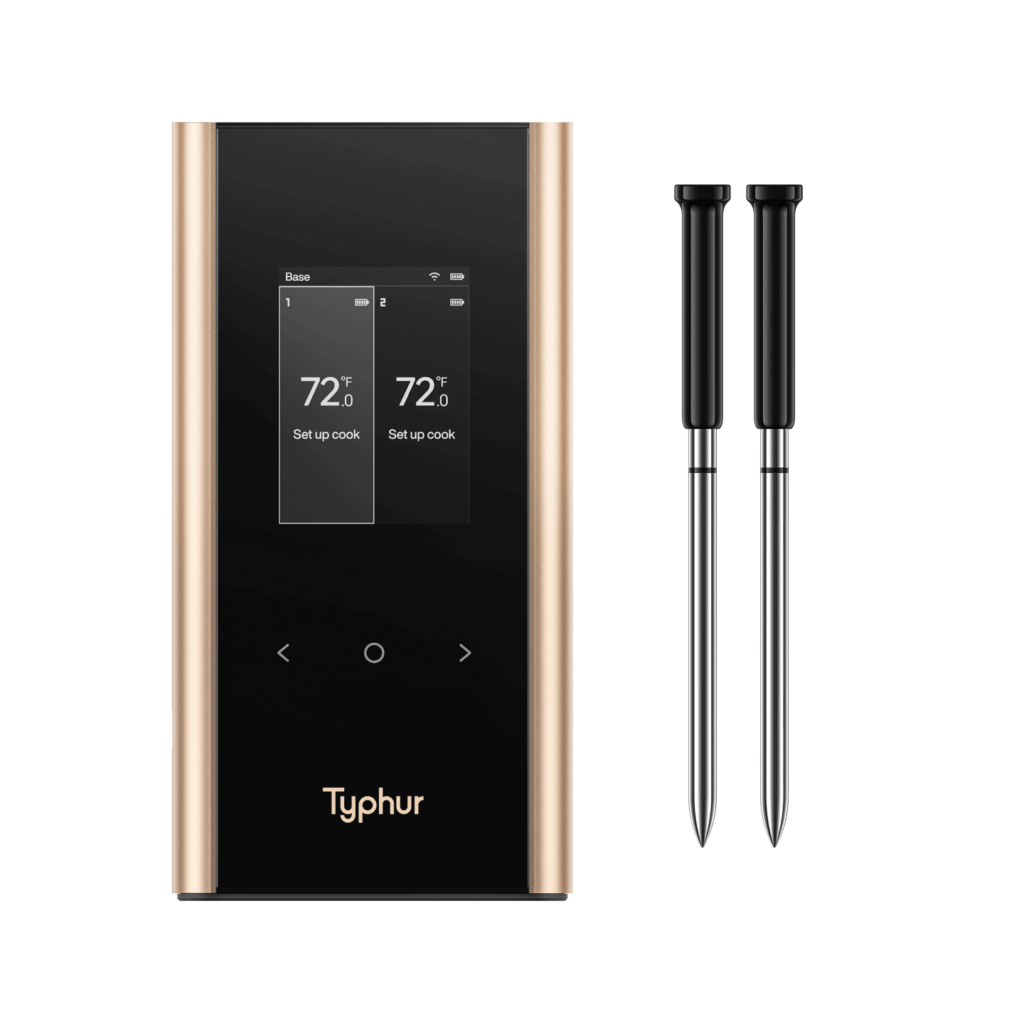
Long Range Wireless Meat Thermometer
Pros: Wireless meat thermometers allow you to monitor the temperature of your food without opening the oven or getting too close to the flames on a grill.
Cons: However, they can be expensive and may have connectivity issues.
Why do you need to use a meat thermometer?
Ensuring food safety
Undercooked or raw meat can cause foodborne illnesses like salmonella or E. coli. The process of cooking kills harmful bacteria, but it has to be cooked to the right temperature to ensure all of the bacteria have been destroyed. Relying on visual cues like the color of the meat or the juices running clear can be unreliable and unsafe, as they may not indicate whether the meat is cooked to a safe temperature.
Consistent cooking results
Using a meat thermometer helps you to reach the desired doneness and texture. When you use a thermometer correctly and cook your food to the same temperature every time, you will likely get the same results in texture and doneness each time.
Helpful for larger cuts of meat
Large cuts of meat like a pot roast or a whole roast chicken take longer to cook and may cook unevenly. A meat thermometer allows you to check the doneness of different parts of the meat without cutting into it and it helps preserve the shape for serving.
Versatility
Meat thermometers are not just for meat! You can also use them to check the temperature of other foods like casseroles, soups, lasagne, etc.
Saves time
Using a meat thermometer can reduce cooking time, as you can cook at a higher temperature without having to check all the time or guess. It’s also very helpful when you want to cook multiple dishes or try to get dinner on the table quickly.
How to use a meat thermometer properly?
To get the most accurate reading from a meat thermometer, you need to insert the probe into the right spot. Below, we’ve outlined how to insert the thermometer properly.
- Insert the probe: The probe should go into the thickest part of the meat, making sure it doesn’t touch the bone, gristle, or fat. For thin cuts of meat, such as chicken breasts, insert the probe from the side.
- Get it to the right depth: Generally, the probe should be inserted about 1-2 inches deep into the meat for accurate temperature measurement. You can get meat thermometers with 4.5-inch probes or 8-inch probes. Both will let you measure the temperature for thick cuts of meat, but the 8-inch probes may let you go deeper in big cuts of meat like roasts, pork shoulder, and turkey.
- Check the temperature at the right time: Check the temperature near the end of the cooking time, but before you think the meat is done. This will give you enough time to make adjustments if needed.
- Determine doneness: Check the appropriate temperature for the type of meat you are cooking and compare it to the reading on the thermometer. Different types of meat require different internal temperatures. For example, beef should be cooked to 140-145°F for medium, while chicken should be cooked to 165°F.
- Clean your thermometer properly: Clean your thermometer with hot soapy water before and after each use, and store it in a safe place to prevent damage.
The fastest and most accurate meat thermometer – InstaProbe
Thanks to improving technology, meat thermometers are now faster, more accurate, and easier to use than ever before. Right now Typhur InstaProbe is leading the technology of meat thermometers.
The Typhur InstaProbe is very easy to use. You never need to worry about how to use a meat thermometer for steak, chicken, or turkey.
Typhur InstaProbe Highlights:
- 0.5 seconds instant full readings powered by unprecedented DCTi™
- Accuracy within ±0.5°F, certified by NIST
- IP67 waterproof rating
- Built-in magnets for easy storage
While there are many different types of meat thermometers available, the Typhur InstaProbe stands out as one of the easiest to use with its enhanced speed and accuracy compared to others on the market.
With its intuitive controls, large display, and foldable probe, the Instaprobe makes it simple for home cooks and professionals to achieve accurate temperature readings and perfectly cooked meals.

